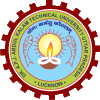Water plays a crucial role in supporting life on our planet. The primary aim of our research
is to evaluate the water quality of the Gomti River & groundwater sources specifically
located in the city of Lucknow. The Gomti River holds immense significance within the
region, originating from Fulhaar Jheel in the Pilibhit district of Uttar Pradesh. It meanders
across a distance of approximately 900 kilometers, traversing the state before eventually
converging with the Ganges River in Ghazipur, particularly in the Saidpur area. Along its
course, the Gomti River passes through several urban centers, with Sultanpur, Lucknow,
and Jaunpur being among the most prominent. In total, there are 15 cities located within
the river's catchment area.
Initially, groundwater was deemed a reliable source for drinking, but with the passage of
time, it has faced contamination stemming from the release of untreated industrial waste
and other human actions. This contamination of water has emerged as a significant factor
in the proliferation of various illnesses, including hepatitis, jaundice, typhoid, dysentery,
and diarrhea. In the city of Lucknow, the capital of Uttar Pradesh, both surface water and
groundwater serve as sources of drinking water.
The purpose of study was to evaluate the current quality of groundwater and River water
in Lucknow. Three stations were selected within the city to collect groundwater and
surface water samples, which underwent a thorough physico-chemical and biochemical
analysis. Parameters such as temperature, pH, turbidity, electrical conductivity, total
dissolved solids (TDS), chloride, fluoride, total hardness, alkalinity, nitrate, phosphate,
sulphate, Bod, Cod, E Coli & T Coli were measured using standard methods.
The findings were compared with the IS drinking water standard 10500:2012, and it was
observed that some parameters for ground water determination at all sampling stations
were above & some were within the acceptable limits. However, some parameters like
TDS, total hardness, alkalinity& chloride exceeded the standard limits at certain stations.
Whereas T Coli & E Coli was found in slight increases at both the stations. This
highlights the importance of monitoring and managing water quality to ensure a safe and
healthy water supply for the residents of Lucknow
Our findings indicate that a majority of the physicochemical parameters of the Gomti
River's water quality exceed the permissible limits set forth by BIS. Nevertheless, certain
aspects, such as pH, turbidity, and electrical conductivity, were observed to fall within the
recommended guidelines established by these international and national organizations.
Title
Bacteriological & Physico-chemical analysis of water quality at Lucknow City
Year Awarded (Blank if Not Awarded)
2023
Awarding Body
Type
Master of Technology
Place of Work
E-Mail
Co Guide (Non IET)
Prof. J. B. Srivastava
Roll No
2100520975004
Registration Date
Area of Research
Environmental Engineering

